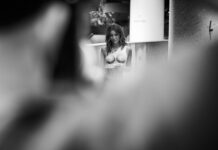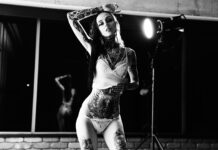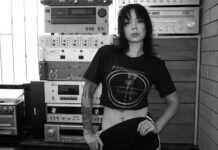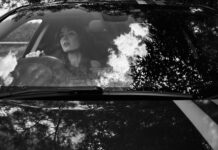8Elite Models asked me to write an article about how photographers should go about contacting agencies to work with their talent. You can read the original article on their blog, or read it here, replicated in full.
I hope you enjoy.
Often agencies get messages from photographers wanting to work with their models. No matter if you’re trying to hire an agency model or test shoot with new faces, this article is about where your photography should be at before contacting an agency and what information the agency is expecting from you to make things more efficiently.
Agency bookers are busy people and don’t have time to waste. They work around the clock and if you call them for a chat, they will likely be doing other things at the same time. So the best way to first get in touch with them – unless you are a commercial client or advertising agency – is via email. And I mean email, not Instagram DM or Facebook message. Email the agency with as much information as possible. The less emails you have to exchange with the agency to get to the point, the better.
We asked our in-house photographer Bruno to write some tips on how to approach agencies – as well as the quality of your portfolio, etc.
So we’ll talk about how you should present yourself to the agency as a photographer and then how your contact with the agency should be.
Read time: under 10 minutes.
HAVE A REAL BUSINESS
Do you have an ABN? A business name? Have you got your Public Liability Insurance sorted? Or are you John Smith with expensive camera equipment just having fun?
If you haven’t started your photography business with the right PLI policy and all that, maybe do that first and come back to read the rest of this article.
No agency will send you a model if you can’t guarantee you get the right assurances in place in case something goes wrong.
If you are all set, then let’s get started.
YOUR PHOTOGRAPHY PORTFOLIO

Your portfolio is an ever changing creature. It should only contain your best work and you should revisit it all the time not only to add new great work, but also remove the ones that are not up to your current level or are irrelevant for the work you’d like to do.
There are many ways to showcase your portfolio: your own website; Instagram; Facebook, etc. Each will have their own advantages and disadvantages.
WEBSITE
A website is a great way to showcase your work, as well as who you are, who your clients are, etc. A well built and maintained website shows your professionalism and that you are serious about your business.
Building your own website can be daunting, but there are many tools out there to make it an easy task. Platforms like Squarespace, Wix, WordPress, WordPress self hosting (for the more tech savvy), etc, offer easy to build drag and drop options, with lots of ready to go templates. Some will offer free tiers, which are not great if you want to look professional and we would advise against, as it might backfire and make you look the opposite of professional.
On top of one of these platforms, you’ll need your own domain name. That is the URL or web address of your website. E.g. brunodomingues.com.au, 8elitemodels.com
Having your own domain name also gives you the opportunity to have your own customised business email address. E.g. hello@brunodomingues.com.au, admin@8elitemodels.com
The more professional your web presence looks, the more chances you have to at least get a reply from the agency. That reply could be anything from accepting your request, asking for more information, declining with some feedback, simply declining it or no reply at all.
Tip: if you build your website, try to decide the area you want to focus on. If you shoot portraits, landscapes, pets and weddings, the agency will likely ignore your email as you don’t seem to specialise on anything. If you do shoot all of that and more, have different websites for different purposes.
Pros:
- Full control over your content;
- Shows you are a professional;
- It’s not full of irrelevant content.
Cons:
- Cost;
- It’s not as simple as posting on social media;
- If not built properly, will not keep people’s attention.
Social Media

On social media, being that Instagram, Facebook or any other platform, you can be more relaxed. In fact, you have to be. The idea of a social media presence, for photographers, is not exactly to be used as a portfolio, although it can be used as such, but to post content often and keep reminding people of your existence. These places are where you post more photos than you would have on your website and it’s a way to showcase your work and how often you work, who you work with, etc.
The number of followers you have will matter but not as much as you’d think. It’s more important to have relevant followers than to have big numbers. Having 2k followers that engage with you and appreciate your work is better than having 100K followers that don’t engage with you at all.
Instagram is just an example. Facebook is also important.
For Instagram, make sure every few months you go back to your old posts and remove anything you don’t believe should be there anymore. Don’t get too attached to your old images, likes, comments, etc.
Tip 1: check your new followers on Instagram and make sure they are people who should be following you. If you work with models, there are lots of predators that will try to follow you to find young women to prey on. Bruno, a while ago, went through his 4k followers, removing every account that was not a potential commercial client, other photographers wanting to learn from him, models, actors, etc. His cleanup drop his followers count from 4k to 1.5k, but those 1.5k matter. Now he keeps on top of it, checking every new follower to make sure that person belongs there.
Tip 2: as a photographer, your profile should NOT be private. No one will request to follow you to see your work that might not be what they expect anyway. Adding that extra step for people to see your work will not help you.
Pros:
- Cost;
- You can post often;
- You don’t need to remove content all the time;
- Very easy to update often.
Cons:
- Less control over your content as you have community guidelines to follow;
- You can get lots of bad followers if you don’t stay on top of things;
- It’s a numbers game and it’s easy to lose focus of what matters: quality;
- There are too many photographers there, of course, so that alone will not do anything for you (yes you still need a website).
QUALITY OF THE MODELS ON YOUR CURRENT PORTFOLIO

When you start portrait and fashion photography, you’re most likely to be shooting with family, friends, and models you find online – usually working on a TFP* basis.
* TFP: Time For Print; Time For Photos. Working on a time exchange basis, photographers and models and makeup artists and stylists get together to create images for their portfolios.
Although this a good way to start, it’s not without its issues. Most of the time, the people you work with are also beginners and it can easily become a blind leading the blind sort of situation. Without someone with experience in the team, who’s to say what you’re doing is any good?
This goes both ways, of course, but as we are talking about photographers, hiring professional models for your portfolio/practice shoots will not only improve the quality of the models you work with at the eyes of agencies and commercial clients, but you will also learn more and faster than you would doing TFP shoots with people you find online.
So if you’re planning on testing new faces from agencies, you should have agency level models on your portfolio. That’s not to say you cannot find these models out there and work with them on a TFP basis, but that’ll take time as they’ll also expect you to have quality work, and be on their level.
Most agencies already photographers they know and trust to send their new faces for test shoots. Agencies need to be sure the photos the models will get back are of high quality and actual useful for their portfolios so they can market their models. Also, these photographers trusted by the agencies can coach their models so they get better at modelling.
Some agencies will not allow their models to test shoot at all. Remember, they are busy people, it’s a business with lots of overheads and they only make money when their models work, so why would they be sending the models to work for free?
For example: 8Elite Models has THREE offices: Brisbane City; Marina Mirage at the Gold Coast; and Forest Lodge (Sydney), plus all the staff: bookers for different offices, accountants, photographer, hair & makeup artist, office admins, and more.
QUALITY OF YOUR PHOTOS

The quality of your photos is even more important than the quality of the models in them. Bad photos of beautiful models will not, unfortunately, get you anywhere. For that reason it’s important for you to work with experienced models, so you can focus on improving your craft.
If you want to be a photographer, you have to invest in education. It will be either a financial or a time investment. Or both, if you’re really serious about becoming the best photographer you can be. Of course, always hiring models for your test shoots so you can practice can become a financial issue in an already expensive job, considering the price of equipment you need, and other costs.
The advice is always to have a mix of all that we’ve been talking about – and more: working with teams of creatives on a collaboration; hiring professional models so you can focus on what you’re testing; looking at what the high end professionals are doing (forget about the Instagram trends, look at advertising and actual fashion editorials done by professionals); education and practice – lots of practice.

A good way to start is to look at what your favourite photographers in your area are offering as education. Some full time photographers often run workshops – where you can learn how they create their images – and photography events that are low costs and good value for money. E.g. Bruno’s popular Brisbane Photowalk is a low cost way of practice with experienced models trained by Bruno himself.
CONCEPT/FIRST CONTACT WITH THE AGENCY
When a photographer contacts an agency, the more information he/she sends in the first email, the better. Who are you? What are you planning for this shoot (concept)? Who else is involved (send links to everyone’s portfolios)? When is the shoot happening? Where is it happening? Is this a commercial** shoot? And so on.
** Commercial shoots are shoots involving a business or a brand where the photos will be used by them for their social media or advertising. Commercial shoots have different rates as a brand will use them to sell their products/services and for that reason, usage costs are involved. Be honest with the agency if you want to have any future in the industry, there’s nothing worse than the agency finding out their models are being used for advertising without being properly paid for that.
In summary, make it very easy for the agency to know exactly what your plans are, straight away. If they have to reply back to you with questions, they’ll likely not read it and just move past your email.
Below examples of a test shoot and a commercial shoot request email. Please note when communicating with agencies we don’t really use the term TFP often, but Test Shoot instead.


MOOD BOARD

Mood boards are used to show the clients, agencies and other talents, what you aim to achieve with the shoot. They can have images from other photographers, advertising campaigns, and even drawings of your plans. The images can show from makeup, hair and wardrobe to location and overall mood (some images will show the makeup, some the wardrobe, etc).
There are many ways to create your mood board: you can put images together using any photo editing software, use popular sites like Pinterest or even saved posts on your Instagram.
Mood boards keep everyone on the same page and it’s the best way to show everyone involved what you’re looking to create.
Just make sure the images in your mood board are not too far off from the quality of the work you already have in your – and your team’s – portfolio (of course the idea is to always improve). That will avoid the “there is no way this team can pull this off” feeling from the talent/agency/client.
TEAMS

Working with a team of creatives is the best – and might be the only – way of achieving some things. Are you a photographer, fashion stylist, makeup artist and hair stylist, all in one? So for some of your ideas to come to life, you will need other creatives.
It’s great to build a team of people you love the work and trust. As the photographer, you are responsible for capturing the images you have in your mind, but you need to learn how to communicate that with your team so working and growing with the team you build is great, and it will help you show the agency/client that there are people in the industry that trust you and like working with you, and also that you can work with a team.
NETWORKING

This is key for any industry: networking. Meeting peers is paramount to get your name out there and find more people to work with. Want to meet new photographers? Find out where they hang out. Looking for other creatives to work with? There are meetup events for that.
Bruno’s photowalks are not free but it always ends in a meetup and that part is open for everyone. So even if you’re not attending the event itself, email him asking where the after walk meetup is going to be, and join them.
There’s also an unofficial creative professionals meetup organised once every month where you can meet other photographers, fashion designers and stylists, hair & makeup artists, models, agency bookers, etc. You can follow them on Facebook and Instagram to stay up to date when the next event is on.
Remember: the more people can vouch for you, the easier it will be for talents, agencies and clients to connect your name to your work. Word of mouth is huge in this industry.
CONCLUSION

Yes, this is a fun industry to be in, but it’s also fast paced and extremely competitive. There are no shortcuts, you need to go through the right steps to become a photographer with hight quality work, trusted by talents, agencies and clients.
Be the professional photographer you would like to hire, but also be the fun person you would like to work with! Learn something new everyday and show that in your work. Don’t expect anyone to give you a chance, you need to work for it.
Build a network of creatives around you, people who will vouch for you as a professional and human being. Get your work to a level that the images speak for themselves.
And be ready for rejection and criticism. The creative industry as a whole is full of that, and it’s part of the fun.
We hope this article helps you not only understand how agencies work and why some times they don’t even reply to you, but also how to get to the point where they cannot ignore you anymore!
RESOURCES
- 8Elite Models (modelling management)
- Agency 888 (talent management)
- Movie Extras Club (film & tv extras management)
- Positive Impact Academy (education for actors and models)
- Bruno Domingues Photography Education (education for photographers)
- Brisbane Photowalk (photography events)
- Brisbane Creative Events (networking event for industry creatives)





